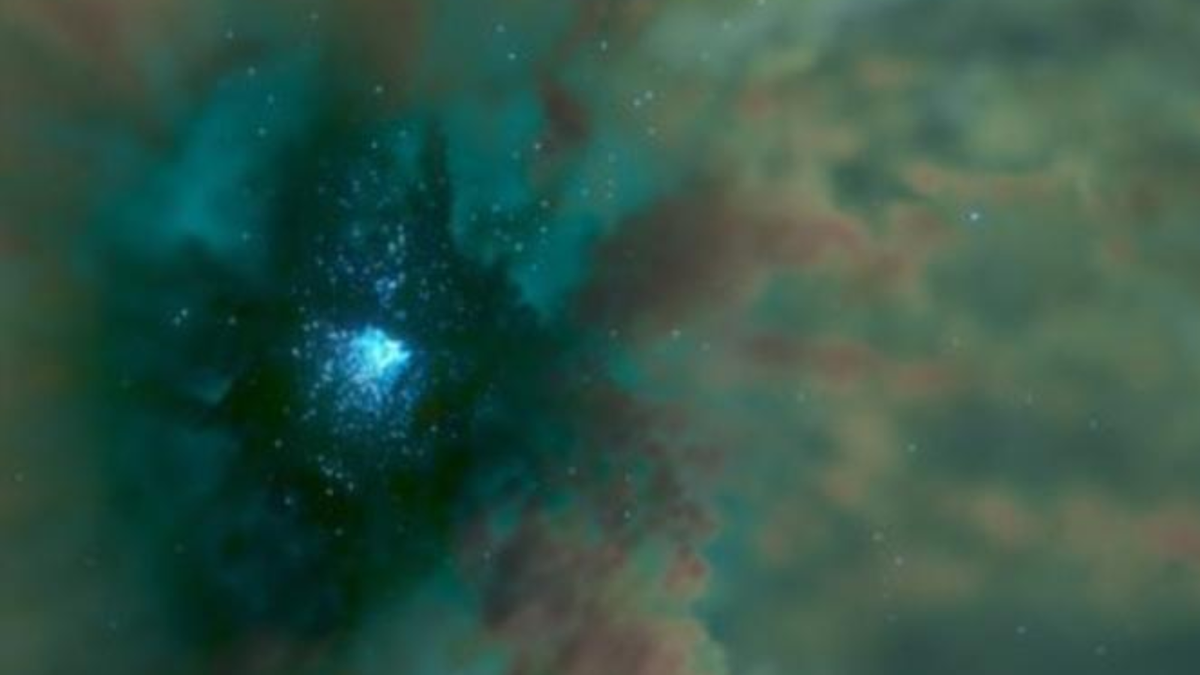The researchers found that elusive intermediate-mass black holes can form in dense star clusters containing anywhere from tens of thousands to millions of tightly packed stars, called “globular clusters.”
An intermediate-mass black hole has a mass between 100 and 10,000 suns. They are heavier than solar-mass black holes, which have a mass range between 10 and 100 solar masses, but lighter than supermassive black holes, which have masses equivalent to millions or even billions in the sun.
These cosmic intermediates have proved elusive for astronomers to detect, with the first example discovered in 2012. Designated GCIRS 13E, it has a mass 1,300 times that of the sun and lies 26,000 light-years away, towards the galactic center the Milky way.
One of the mysteries surrounding intermediate-mass black holes concerns their formation. Stellar-mass black holes are born when massive stars collapse, and supermassive black holes grow from subsequent mergers of larger and larger black holes. Yet a star massive enough to die and create a black hole with thousands of solar masses must be incredibly rare and must struggle to retain that mass when it “dies”.
Connected: Right again, Einstein! Scientists discover where matter “falls” into black holes
To explore the mystery of how these intermediate-mass black holes appear, a team of researchers performed the first-ever star-by-star simulation of massive clusters. This showed that a dense enough molecular cloud “nursery” of globular clusters could create stars massive enough to collapse and create an intermediate-mass black hole.
“Previous observations suggest that some massive star clusters, globular clusters, host an intermediate-mass black hole,” team leader and the University of Tokyo scientist Michiko Fuji said in a statement. “So far, there is no convincing theoretical evidence to show the existence of an intermediate-mass black hole of 1,000 to 10,000 solar masses compared to less massive (stellar mass) and more massive (supermassive) ones.”
A chaotic birthplace for black holes
The term “birth nest” may conjure up images and feelings of warmth, comfort, and tranquility, but it couldn’t be less appropriate for star formation in globular clusters.
These densely packed conglomerations of stars live in chaos and turmoil, with differences in density causing stars to collide and merge. This process causes the stars to accumulate mass, thereby increasing their gravitational influence, drawing more stars into their vicinity and thus causing more and more mergers.
The rapid collision and merger process taking place in the hearts of globular clusters can lead to the creation of stars with masses equivalent to about 1000 suns. That’s enough mass to create an intermediate-mass black hole, but there’s an obstacle.
Astrophysicists know that when stars collapse to create black holes, much of their mass is blown away in supernova explosions or by stellar winds. Previous simulations of the creation of an intermediate-mass black hole confirmed this, further suggesting that even massive stars with 1000 solar masses would be too small to create an intermediate-mass black hole.
To find out whether a massive star can “survive” with enough mass to give birth to an intermediate-mass black hole, Fujii and team simulated a globular cluster as it formed.

“We have for the first time successfully performed numerical simulations of the formation of globular clusters, modeling individual stars,” Fujii said. “By separating individual stars with a realistic mass for each, we could reconstruct the collisions of stars in a densely packed environment. For these simulations, we developed a new simulation code in which we could integrate millions of stars with high accuracy.”
In the simulated globular cluster, rapid collisions and mergers led to the formation of extremely massive stars that could retain enough mass to collapse and give birth to an intermediate-mass black hole.
The team also found that the simulation predicted a mass ratio between the intermediate-mass black hole and the globular cluster in which it formed. This ratio, as it turned out, corresponds to actual astronomical observations.
“Our ultimate goal is to simulate entire galaxies by separating individual stars,” Fujii explained. “It is still difficult to simulate galaxies the size of the Milky Way by separating individual stars using currently available supercomputers. However, it would be possible to simulate smaller galaxies such as dwarf galaxies.”
Fuji and her team also intend to target star clusters that formed in the early universe. “The first clusters are also places where intermediate-mass black holes can be born,” she said.
The team’s research was published Thursday (May 30) in the journal Science.
